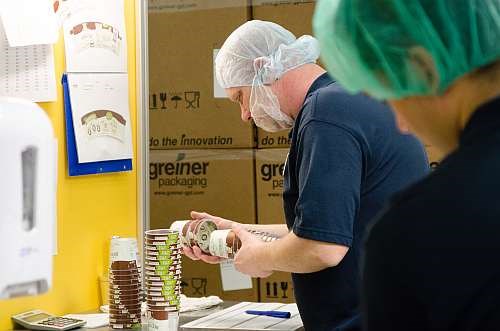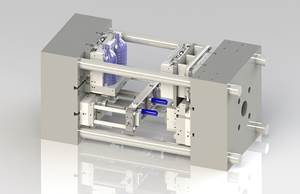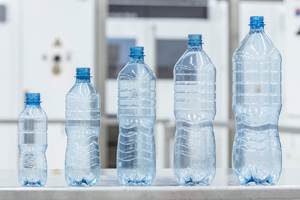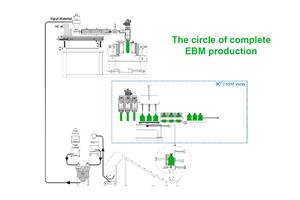Transplants: More Evidence of Processing’s Resurgence in U.S.
Three major firms set up first processing operations in America.
It was the fall of 2013. I was attending the Global Plastics Summit in Chicago, a yearly event cosponsored by the and , an international “thought leader” in the area of plastics, chemicals and other industries.
The topic was shale gas, more specifically the opportunity that abundant, inexpensive feedstock materials would present to plastics processors in the U.S. Greg Jozwiak, North America commercial v.p. for , was one of the speakers that day. Looking into his crystal ball, and referring to PE packaging in particular, he said, “Core growth (due to shale gas) could boost growth by 2.5%, reshoring 1%, substitution (of non-plastics packaging) by 0.75% and export of finished goods another 0.25%,” he explained. “That’s 4.5% of growth, representing 770,000 metric tons/yr.” Perhaps even more intriguing to me, Jozwiak added that Dow customers outside of the U.S. are looking at establishing a manufacturing footprint in America to tap into this potential.
My first thought was “Wow.” Then I wondered, “Maybe a bit optimistic?” Then, as the next speaker was being introduced, I concluded my thought process with “I guess we’ll find out.”
In late April, I found out.
I was part of a tour of worldwide journalists invited by to visit a group of companies in Pennsylvania. The organization is the centerpiece of a state government initiative to increase the visibility of a 53-county footprint to international and domestic investors and reshoring prospects.
Most of the companies we visited were long established in the region. Companies like sheet processor , custom molder and foam processor Ralph S. Alberts, rotomolder , and compounding equipment supplier . We also heard presentations from the likes of PS foam profile extrusion processor , and custom molders and . Central Pennsylvania has been a prime location for plastics processing ever since I got into the industry back in the late 1980, so hearing about the rich histories these companies have in that region was not all that surprising.
What I found even more curious was the arrival of two new transplants to the area: ., an Austrian packaging powerhouse; and Fuling Plastics USA, a division of of China that makes straws and cutlery for fast-foods. In the June issue of Plastics Technology magazine you can read the full report on these companies in the Close-Up article.
To say these companies selected central Pennsylvania to set up operations because of shale gas would be misleading. (In fact, because of lower oil prices, some fracking operations have reportedly slowed down a bit.) Certainly low energy was a factor, as was proximity to a broad customer base and easy access to transportation services. Not to mention the proximity of in Williamsport, from which Greiner has already recruited a new employee.
I think you need to look at these developments more broadly. In fact, also in the June issue you’ll see yet another “transplant” article on the plans of Germany has to build a $27.1 million plant in Mills River, N.C., where it will mold and extrude medical parts. And I’ve heard rumblings of compounding capacity reshoring to the U.S. from Asia.
Manufacturing is returning to the U.S. In plastics, many existing operations are expanding (see On-Site article here) and we get reports of new ones coming on stream on a regular basis. This a pretty good time to be in the 大象传媒 of melting pellets.

Technician at Greiner inspects combination PP and cardboard cup prior to packaging.
Related Content
For Extrusion and Injection-Blow Molders, Numerous Upgrades in Machines and Services
Uniloy is revising its machinery lines across the board and strengthening after-sales services in tooling maintenance, spare parts and tech service.
Read MoreAt NPE, Cypet to Show Latest Achievements in Large PET Containers
Maker of one-stage ISBM machines will show off new sizes and styles of handled and stackable PET containers, including novel interlocking products.
Read MoreFirst Water Bottles With Ultrathin Glass Coating
Long used for sensitive juices and carbonated soft drinks, KHS Freshsafe PET Plasmax vapor-deposited glass coating is now providing freshness and flavor protection for PET mineral water bottles.
Read MoreGet Color Changes Right In Extrusion Blow Molding
Follow these best practices to minimize loss of time, material and labor during color changes in molding containers from bottles to jerrycans. The authors explore what this means for each step of the process, from raw-material infeed to handling and reprocessing tails and trim.
Read MoreRead Next
Lead the Conversation, Change the Conversation
Coverage of single-use plastics can be both misleading and demoralizing. Here are 10 tips for changing the perception of the plastics industry at your company and in your community.
Read MoreBeyond Prototypes: 8 Ways the Plastics Industry Is Using 3D Printing
Plastics processors are finding applications for 3D printing around the plant and across the supply chain. Here are 8 examples to look for at NPE2024.
Read More













